
Giro d'Italia 2022 Stages
The Giro d'Italia 2022 consists of 21 stages over 23 days in three weeks. The first stage starts on Friday 6 May in Budapest and the last stage ends on 29 May in Verona. Below you will find an overview of all stages of the Giro. Do you want to read more about the Tour of Italy? Read more here >
Stages of the Giro d'Italia 2022:
- Stage 5: Catania - Messina
- Stage 6: Palmi - Scalea
- Stage 7: Diamante - Potenza
- Stage 8: Naples
- Stage 9: Isernia - Blockhaus
- Stage 10: Pescara - Jesi
- Stage 11: Santarcangelo di Romagna - Reggio Emilia
- Stage 12: Parma - Genoa
- Stage 13: San Remo - Cuneo
- Stage 14: Santena - Turin
- Stage 15: Rivarolo Canavese - Cogne
- Stage 16: Salò - Aprica
- Stage 17: Ponte di Legno - Lavarone
- Stage 18: Borgo Valsugana - Treviso
- Stage 19: Matano Lagunare - Castelmonte
- Stage 20: Belluno - Fedaia Pass
- Stage 21: Verona
Stage 1: Budapest - Visegrád
Friday May 6 | start: 12.20 pm | finish: 5.15 pm


The 2022 Giro d'Italia will start with a flat 195 kilometer stage with a tough finish. The riders will start from Budapest and finish on a steep climb to the castle of Viségrad. The route contains hardly any obstacles. In fact, the only climb of the day starts after 190 kilometers in the saddle. The final climb in the Viségrad citadel, which starts in the center of Viségrad, is 5.6 kilometers long and has a gradient of 4.2%.
Stage 2: Budapest
Saturday May 7 | start: 2 p.m. | finish: 5.10 pm


The 2nd stage of the 2022 Giro d'Italia is a 9.2 kilometer long ITT in the streets of Budapest. The route ends with a 1.3 kilometer climb to the finish line. The starting place is Hősök tere, or Heroes' Square, which is of course a well-chosen place to start. The riders head to the Danube and continue along the river. The route passes Parliament and turns left to cross the river. After another stage on the Danube, the riders turn right to climb to the old town on Castle Hill. The only intermediate time control is after 7.3 kilometers, just before the only climb. The finish is on Szentháromság tér, or Holy Trinity Square. The climb to the line is 1.3 kilometers long and the average gradient is 4.9%. However, that is a distorted figure, because the first 200 meters run at 10% before the climb flattens out.
Stage 3: Kaposvár - Balatonfüred
Sunday May 8 | start: 12.25 pm | finish: 5.15 pm


The third stage of the 2022 Giro d'Italia goes from Kaposvár to Balatonfüred over 201 kilometers. A mass sprint is almost certain. In last year's Giro, Caleb Ewan won two sprint stages before dropping out on stage eight. Arnaud Démare won four stages and was the fastest finisher of the 2020 edition. Pascal Ackermann and Caleb Ewan were the most successful sprinters in the 2019 Giro. Both took victory twice. The 3rd stage of the Giro d'Italia largely runs along the shores of Lake Balaton. The race isn't completely flat, but the slopes shouldn't worry fast guys - mainly false flat. The course is thus tailor-made for a fast finishers showdown.
Stage 4: Avola - Etna
Tuesday May 10 | start: 12.25 pm | finish: 5.10 pm


Stage 5: Catania - Messina
Wednesday, May 11 | start: 11.30 am | finish: 4 p.m


Catania is the second largest city in Sicily. Catania is located at the foot of Mount Etna and has already seen a number of sprint finishes in the past, but on the last visit it served as a starting place. Two years ago, the race departed from Catania on almost the same roads to Villafranca Tirrena. The only difference is that the race is 32 kilometers longer and finishes in Messina, Vincenzo Nibali's hometown. Just like then, the first part of the route runs along the Mediterranean coast. The route passes through Chianchitta before turning inland at kilometer 38. Slowly but surely the riders approach the only climb of the day, the Portella Mandrazzi. The climb is 19.5 kilometers long and the average gradient fluctuates around 4%. The summit is climbed at an altitude of 1,125 meters before a flying descent of 30 kilometers leads to Terme Vigliatore on the northern side of Sicily. Two years ago, a group of sprinters who dropped out and lost contact on the Portella Mandrazzi chased the invasion on the flat towards Villafranca Tirrena. The good news for the dropouts is of course that this time there are 32 kilometers more to restore contact with the peloton.
Stage 6: Palmi - Scalea
Thursday, May 12 | start: 12.35 pm | finish: 5.10 pm


Stage 6 of the Giro is the first race in mainland Italy. The race will start from Palmi in the deep south to finish in Scalea after a mostly flat race of 192 kilometers. Scalea has featured regularly in recent editions of the Giro, but it has been 22 years since the city last had a stage finish. In 2000 Ján Svorada sprinted to victory. A sprint finish is also the most likely outcome in 2022. The route between Palmi and Scalea is almost flat. The only climb comes in the first hour of the race, when the riders climb towards the airfield of Vibo Valentia. It is a shallow hill test, which will only be of interest to riders with an eye on the blue KOM jersey.
Stage 7: Diamante - Potenz
Friday May 13 | start: 11.40 am | finish: 5.10 pm


It's Friday the 13th and it's going to hurt! The 7th stage of the Giro goes from Diamante to Potenza and has an altitude difference of 4,510 meters, while the route is 196 kilometers. The only flat kilometers are the first 40. This part leads along the Golfo di Policastro and once the route turns inland it goes up or down for the rest of the day. In order of arrival, the riders will tackle the Passo Colla (9.3 kilometers at 4.5%), Monte Sirino (24.4 kilometers at 3.8%), Montagna Grande di Viggiano (6.6 kilometers at 9.1% ), Monte Scuro (6.1 kilometers at 9.7%) and La Sellata (7.8 kilometers at 5.9%) before arriving in the arrival town of Potenza. Two more small but decisive challenges to go. In Potenza the riders tackle a 2.3 kilometers climb at 4.9% with 7 kilometers to go before the last 350 meters go up at 8%.
Stage 8: Naples
Saturday May 14 | start: 1.35 pm | finish: 5.15 pm


The 8th stage of the Giro d'Italia will be a criterium race in and around Naples. The bumpy course is good for 149 kilometers. The Giro has not returned since 2013's Grande Partenza in Italy's third-biggest frost. Then the 1st stage was a criterium race and Mark Cavendish turned out to be the best. The ManX Missile was stronger than Elia Viviani and Nacer Bouhanni on the line. This year's Naples stage will also include a criterium, although the course is much hillier than in 2013. Each lap will feature Monte di Procida and the ascent of Lake Lucrine on the Phlegraean peninsula west of Naples. The 19-kilometre circuit is preceded by a loop towards Lago di Patria. The riders will enter the bumpy lap after about 50 kilometers and it will be covered four times before the riders return to Naples. A 3.4 kilometer climb is climbed on the Discesa Coroglio with 7 kilometers to go. The riders descend to the waterfront to finish on the seaside promenade Via Fransesco Caracciolo.
Stage 9: Isernia - Blockhaus
Sunday May 15 | start: 11.40 am | finish: 5.15 pm


The 9th stage is the first big test of the Giro. Over 188 kilometers, the riders traverse a mountainous course with 5,000 climbing meters, the lion's share of which lies in a double ascent of Blockhaus. The pink caravan departs from Isernia and the route climbs right from the start. When the riders pass Roccaraso after almost 40 kilometers, there have already been three sprints for KOM points. In Roccaraso the gradients decrease and a long descent heralds an intermediate stage over undulating terrain. It's the calm before the storm. From Pretoro, the riders start for the first time on the Passo Lanciano, another name for Blockhaus. After climbing the 10.3 kilometer climb at 7.6%, the route descends towards Scafa, before going up again. From Scafa, the final climb is 26 kilometers long, while the average gradient is 7.3% on average. The official distance and gradient may be different - 13.6 kilometers at 8.4% - the fact remains that the riders' legs will be tested from Scafa. Even more alarming for some will be the average gradient of the last 10 kilometers: 9.4%, while this section has the steepest part at 14%.
Stage 10: Pescara - Jesi
Tuesday May 17 | start: 12.30 pm | finish: 5.15 pm


The first stage after the second rest day of the Giro is a race from Pescara to Jesi. The 196 long race through the Marche region is flat in the first half and hilly in the second. The last time the Giro visited Pescara was in 2013. The city on the Abruzzo coast served as the stage finish of a rain-ravaged race. That day Adam Hansen rode solo to victory from the leading group. It has been three years since Jesi saw his last pro peloton. In 2019, the Tirreno-Adriatico visited the city in the Marche region. Jesi was the end station of a hilly course with a flat final. Julian Alaphilippe outwitted purebred fast men Davide Cimolai and Elia Viviani on the line. The 10th stage of the Giro is more or less a reflection of Tirreno's course. The first half is a completely flat affair along the Adriatic coast before the second half is more hilly. In Civitanova Marche, the riders head into the interior of the Marche to cross rougher terrain. The climbs in Recanati and Filottrano are particularly steep. After Monsano - a village with a 4.4km climb at 4.2% - the cyclists descend to Jesi before the final 1.5km climbs false flat to the finish line.
Stage 11: Santarcangelo di Romagna - Reggio Emilia
Wednesday, May 18 | start: 12.20 pm | finish: 5.15 pm


Stage 11 is one of the longest stages of the Giro. The race between Santarcangelo di Romagna and Reggio Emilia has a total of 203 kilometers. Five editions ago, the arrival city of Reggio Emilia hosted the first ever Giro d'Italia stage finish. Fernando Gaviria took one of his four stage victories in that edition. The Colombian outwitted Jakub Mareczko and Sam Bennett in the capital of the province of the same name. A sprint finish is also the most likely of this year's 11th stage. The course between Santarcangelo di Romagna and Reggio Emilia is completely flat.
Stage 12: Parma - Genoa
Thursday, May 19 | start: 11.55 am | finish: 5.15 pm

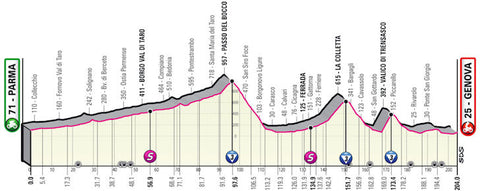
Stage 12 of the Giro d'Italia is a race of 204 kilometers. After climbing three mountain peaks in the second half of the course, the final is a flat run-up of about 20 kilometers to Genoa. The Giro last visited Genoa in 2015. It was a flat stage that ended in a bunch sprint. Elia Viviani took the flowers. The riders will depart from Parma this time to enter an almost endless false flat in the first 100 kilometers. Then they reach the highest point of the day, Passo del Bocco, at 957 meters. The second half of the route is more varied. First the riders tackle La Colletta and immediately after the descent comes the Valico di Trensasco. This is a 4.3 kilometer climb with an average gradient of 8%. Still about 30 kilometers to go at the top. The route descends to a nearly flat 20km stretch, while the home straight is a false flat uphill.
Stage 13: Parma - Genoa
Friday May 20 | start: 1.20 pm | finish: 5.15 pm


The 13th stage of the Giro d'Italia features the Colle di Nava in the first part of the 157-kilometer race. Once that climb is over, the last 100 kilometers to Cuneo are almost flat. The first part of the race mirrors the 2020 edition of Milan-San Remo. The riders will follow the Ligurian coast to turn left and continue inland in Imperia. The route climbs false flat on the Colle San Bartolomeo before descending to the foot of the Colle di Nava. On this side the climb is 9.1 kilometers long, while the average gradient is 6.8%. More than 100 kilometers remain to the top of the Colle di Nava. This section is almost flat.
Stage 14: Santena - Turin
Saturday May 21 | start: 13.00 | finish: 5.15 pm


With a length of 147 kilometers, the 14th stage of the Giro is a circuit ride through the hills east of Turin. The number of climbs is 3,000 meters and the final is in the descent. Riders who like to excel on the flat should try it in the first 35 kilometers, because the rest of the course is either up or down. The action starts with the 4km climb at 7% to Il Pilonetto and after 60km enters the circuit via a modest climb. After 74.2 kilometers, the riders will cross the finish line for the first time before continuing to the foot of the Bric del Duca. This climb is 5 kilometers long and rises at 8.6%. After passing the Basilica of Superga and a gentle descent of 12 kilometers, the riders reach the foot of the Colle della Maddalena. The Colle della Maddalena is a 3.5 kilometer climb with a gradient of 8.1%, the first half of which is particularly tough. It is almost 12 kilometers from the top to the finish. Most of it is downhill, except for a small climb half way up in the outskirts of Turin. The finish line is where the opening time trial of last year's Giro ended - in the shadow of the church of Gran Madre di Dio.
Stage 15: Rivarolo Canavese - Cogne
Sunday May 22 | start: 12.15 pm | finish: 5.15 pm


The 15th stage of the Giro will be held in the Valle d'Aosta. The stage of 177 kilometers starts from Rivarolo Canavese to finish in Cogne after a climb of 22.4 kilometers. After the flag drops, the riders head towards Ivrea, where they turn north to follow the river Dora Baltea upstream for tens of kilometers. Just after Pollein, the route leaves the valley and starts the 12.3 kilometers to Les Fleurs. Back in the valley, the riders cross the Dora Baltea to climb to Verrogne. The ascent of Verrogne is 13.8 kilometers long and has an average gradient of 7.1%. In fact, the only reason to include the hill is to add both kilometers and vertical meters, as the route returns to exactly the same place it started - in Aymavilles. After crossing the Dora Baltea again, the route continues in the valley of the Torrente Grand'Eyvia. This mountain stream rises somewhere on the Gran Paradiso, but of course the riders don't get that far. In Cogne they call it quits. The final climb totals 14 miles (22.4 kilometers), but the gradients aren't as intimidating as the length. The first 5 kilometers go up at 6.8%, the rest of the climb does not even exceed 4%.
Stage 16: Salò - Aprica
Tuesday, May 24 | start: 11 a.m. | finish: 5.15 pm


The 16th stage of the Giro d'Italia leads over four intermediate climbs to a downhill finish in Aprica. The height difference is 5,250 meters, while the total distance is 202 kilometers. The Giro last finished in Aprica seven editions ago. Mikel Landa won the stage ahead of Steven Kruijswijk and Alberto Contador. However, the course was completely different. Aprica served as the finish climb, while this year's stage is supposed to end with a technical descent from the Passo di Sant Cristina. The race gets underway in Salò on Lake Garda and begins with the first climb, Goletto di Cadino, shortly after leaving the shores of Lake Idro. It's a tough test of almost 20 kilometers to the highest point of the day, at almost 2,000 meters above sea level. The route then descends to Capo di Ponte to follow the River Oglio upstream. In Edolo, the Passo del Mortirolo begins as a false flat before gradually becoming steeper. After Monno, the official start of the ascent, the slopes begin to rise. This is known as the easiest side of the Mortirolo, which still climbs for 12.6 kilometers at 7.6%. After a descent to Mazzo and a stretch in the valley of the river Adda follows the short climb to Teglio. The riders then fly back into the valley to tackle the Passo di Sants Christina. This is a climb on a very narrow road with gradients constantly hovering around 10% in the last 5 kilometers. The descent is just as narrow until the riders reach the main road in San Pietro. The run up to Aprica is relatively easy.
Stage 17: Ponte di Legno - Lavarone
Wednesday, May 25 | start: 12.30 pm | finish: 5.15 pm


At 168 kilometers in length, stage 17 of the Giro crosses four alpine peaks from Ponte di Legno to Lavarone. The finish is 8 kilometers after the last mountain, Menador, a climb of 7.9 kilometers at 9.9%. Ponte di Legno saw its last stage finish three editions ago. At the end of a tough race in beastly weather, Giulio Ciccone outwitted Jan Hirt on the line. Then the Mortirolo served as the final climb, now the riders go in the opposite direction to tackle the Passo del Tonale once the flag drops. After climbing the 10.9 kilometer climb at 5.9%, the route descends tens of kilometers. Only in San Michele all'Adige, after almost 80 kilometers, does the road start to climb again. After a 5.9 kilometer climb at 6.8% to Palù di Giovo, the race continues over rolling terrain to the foot of the Passo del Vetriolo. That is a test of 11.8 kilometers at 7.7%. The Giro descends to Caldanazo and shortly afterwards the final climb appears. The Menador - or, Monte Rovere - is a 7.9 kilometer climb with an average gradient of 9.9%. The penultimate kilometer is the most intimidating part at 12.6%. After the Menador the route climbs for a few more kilometers with shallow gradients before a descent leads to the finish which is slightly uphill.
Stage 18: Borgo Valsugana - Treviso
Thursday, May 26 | start: 1.45 pm | finish: 5.15 pm


The last bunch sprint of the Giro is expected at the end of stage 18. The route between Borgo Valsugana and Treviso is 152 kilometers long without major obstacles. The first 100 kilometers are not completely flat, but the climbs are just goosebumps compared to the giants of the previous days. Sure, the Muro di Ca' del Poggio is excessively steep, but the 1.1-kilometer grade at 12.3% appears with about an hour left in the saddle. The rest of the route is a flat approach to Treviso.
Stage 19: Marano Lagunare - Castelmonte
Friday May 27 | start: 12.10 pm | finish: 5.15 pm


The 19th stage of the Giro covers 178 kilometers from Marano Lagunare to the sanctuary of Castelmonte. After three intermediate climbs, the finish is uphill. After the start in the fishing village on the Marano Lagoon, the riders head north on flat roads for about 80 kilometers. Then follows a short and sharp climb to the caves of Villanova and after the descent the Passo di Tanamea pops up, a stage of 12.1 kilometers at 4.6%. The Giro enters Slovenia via the Ucja pass and after the descent to Idrsko, the Kolovrat presents the toughest climb of the day. The 10.3-kilometer ascent has an average of 9.2%. The opener in particular is daunting, as the first 4.5 kilometers of the actual climb are virtually all going up in double digits. With 4 kilometers to climb, 1 kilometer at 12% is another challenging part. The Giro flies back to Italy on the descent and after 10 kilometers on the flat the final climb starts in Cividale del Friuli. The climb to the sanctuary of Castelmonte is 7.1 kilometers long and ascends at 7.8%, although that average is distorted by flat sections and even a short descent. The last 2 kilometers contain several double-digit stretches.
Stage 20: Belluno - Passo Fedaia
Saturday May 28 | start: 12.15 hours | finish: 5.15 pm


The last mountain stage of the Giro covers 168 kilometers with a total altitude difference of 4,490 meters. The riders must conquer the Passo di San Pellegrino and the Passo Pordoi before finishing on the Passo Fedaia. The last 5.4 kilometers rise with more than 11%. The first 40 miles are not a reliable indication of what lies ahead - on the contrary, it is the calm before the storm. Then the action kicks off as the riders tackle the San Pellegrino Pass. The 18.5 kilometer long climb with an average gradient of 6.2% is ideally suited to stretch your legs. The route descends into an elongated false flat that shoots up at the foot of the next stage. The Pordoi Pass is similar to the previous climb, albeit shorter and slightly steeper. The climb of 11.8 kilometers at 6.8% rises to an altitude of 2,239 meters, making it the Cima Coppi, or the highest point of the entire Giro. The descent of Pordoi is done in two stages. Halfway through, the route levels out again before briefly ascending - 2 kilometers at 5% - and descending further to Savinèr di Laste at the foot of the finish climb. The Fedaia Pass - or, Marmolada - is 14 kilometers in total and has an average of 7.6%. The second half is the hardest part. After Malga Ciapela the road climbs straight up for almost 3 kilometers at about 12%, while the rest of the route is almost as challenging with gradients hovering around 10%.
Stage 21 & Finish: Verona
Saturday May 28 | starts: 13.55 hours | finish: 5.10 pm
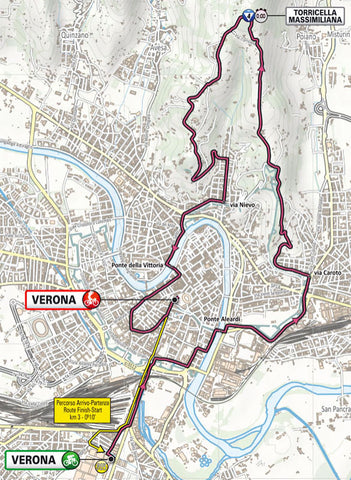

The final stage of the Giro d'Italia is a back-and-forth time trial in Verona. The 17.4-kilometer trail finishes in the city's Roman amphitheatre. Three editions ago Richard Carapaz took the overall victory in exactly the same place, while Vincenzo Nibali and Primoz Roglic flanked him on the final podium. The 1984 and 2010 Giros finished in similar style, with Francesco Moser and Ivan Basso respectively winning the maglia rosa. The route of the time trial is a carbon copy of 2019. The route includes an intermediate climb on the Via Torricelle - 4.5 kilometers at 4.6% - before a descent along wide roads leads to the finish in the Arena. The time control is at the top of the climb. Chada Hage stormed to stage honors in 2019, beating Victor Campenaerts and Thomas De Gendt with a time of 22 minutes and 7 seconds.
Would you like to read more about the Giro?
Sign up for the newsletter and receive a 10% discount as a gift!




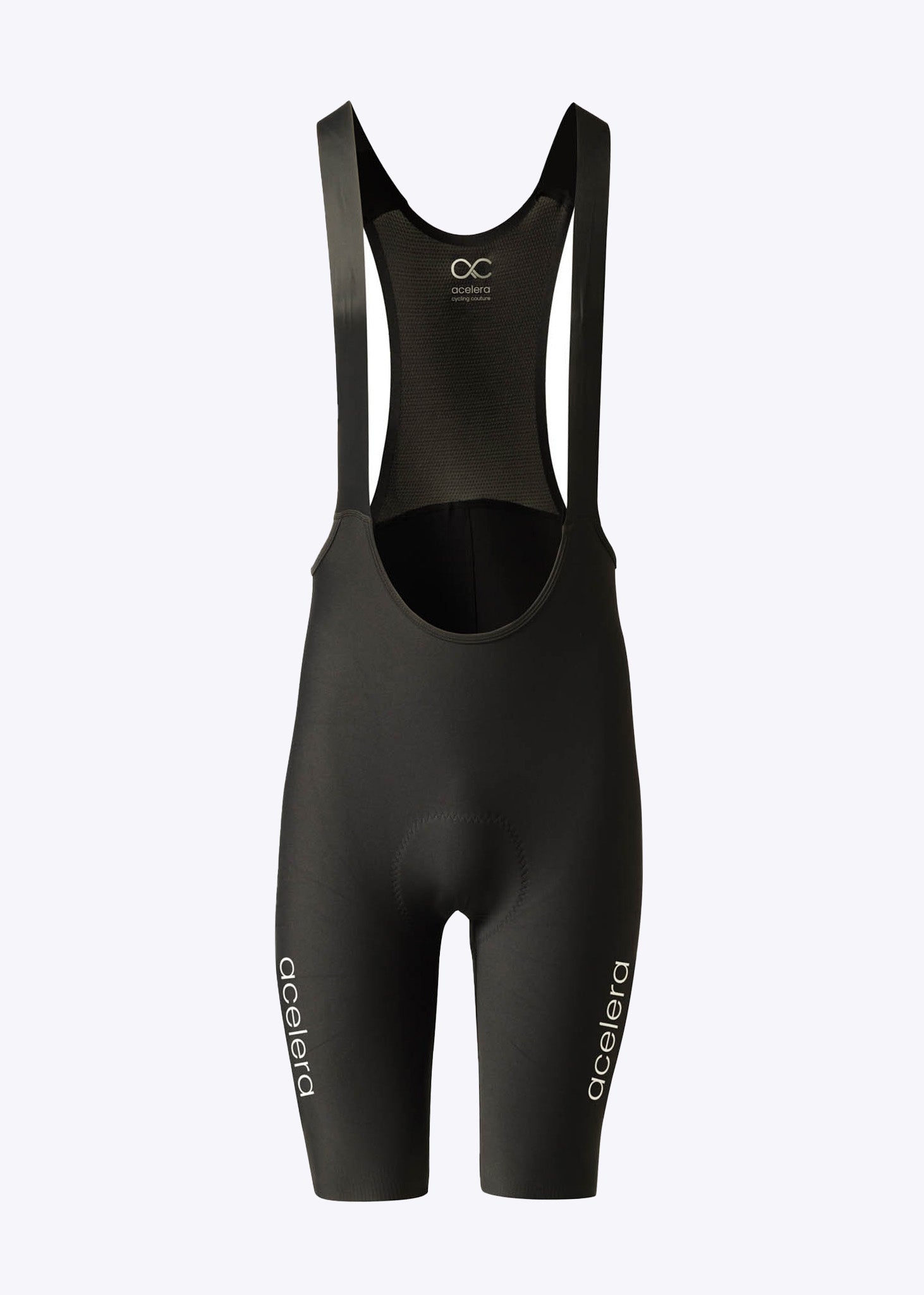
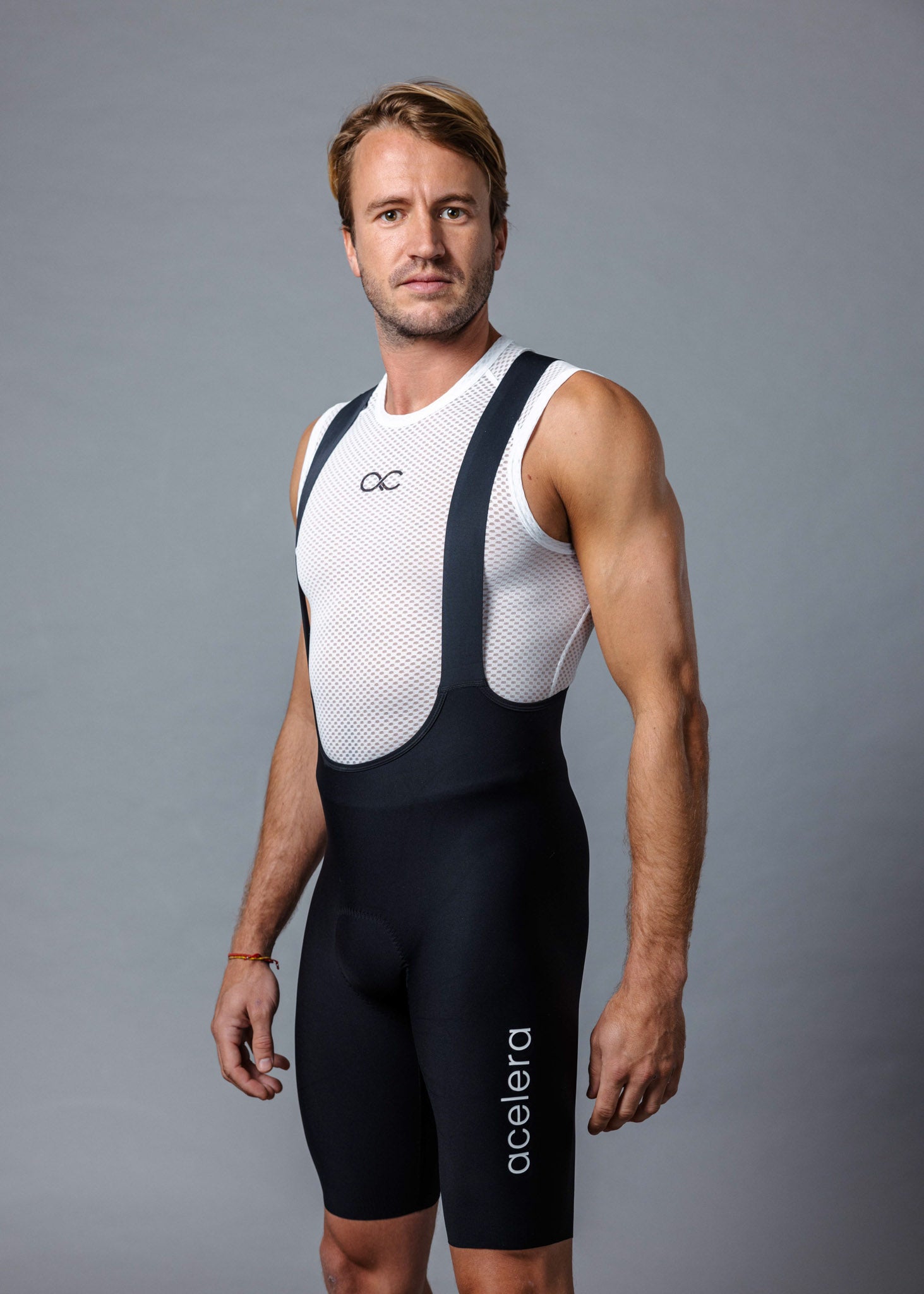


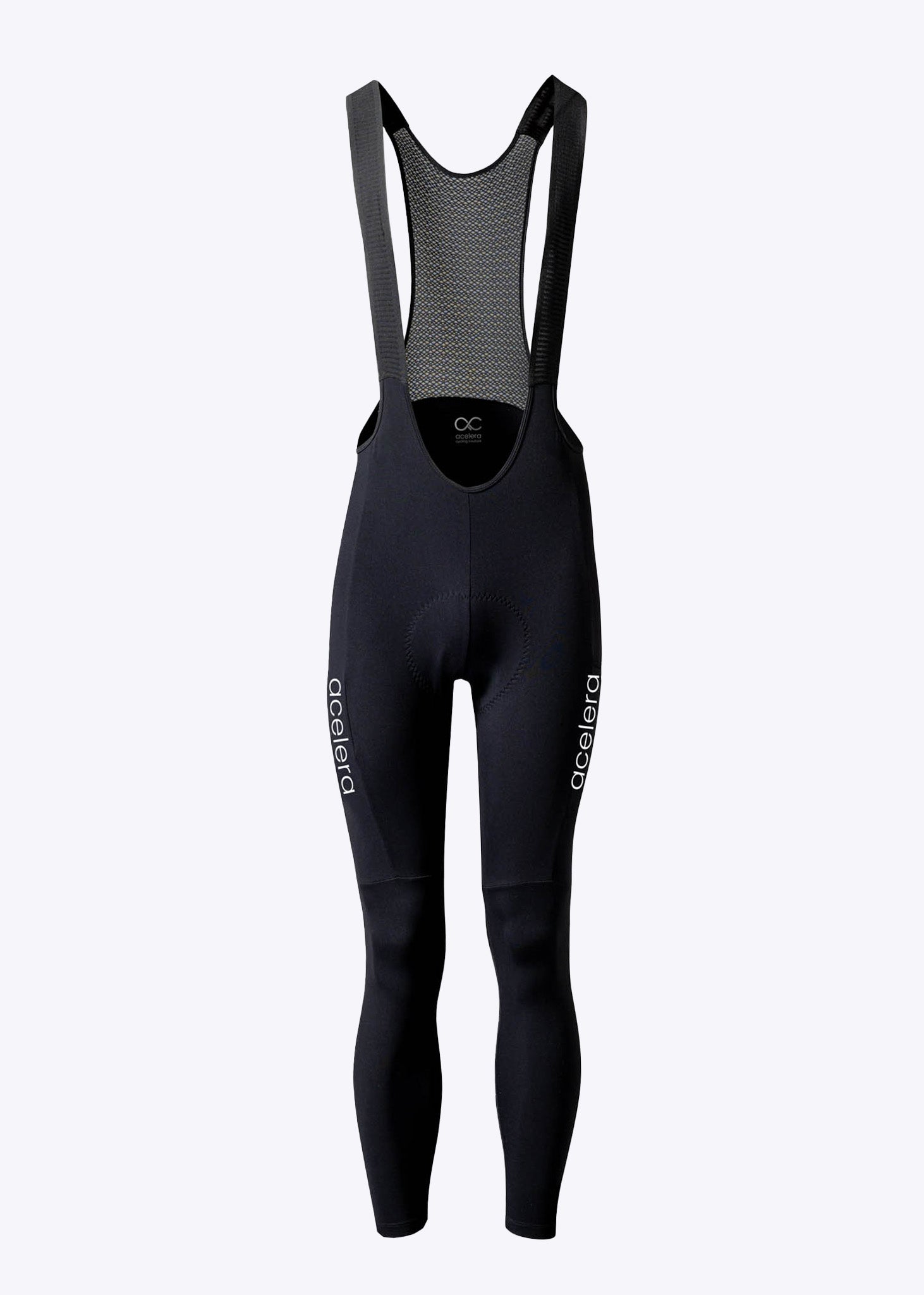
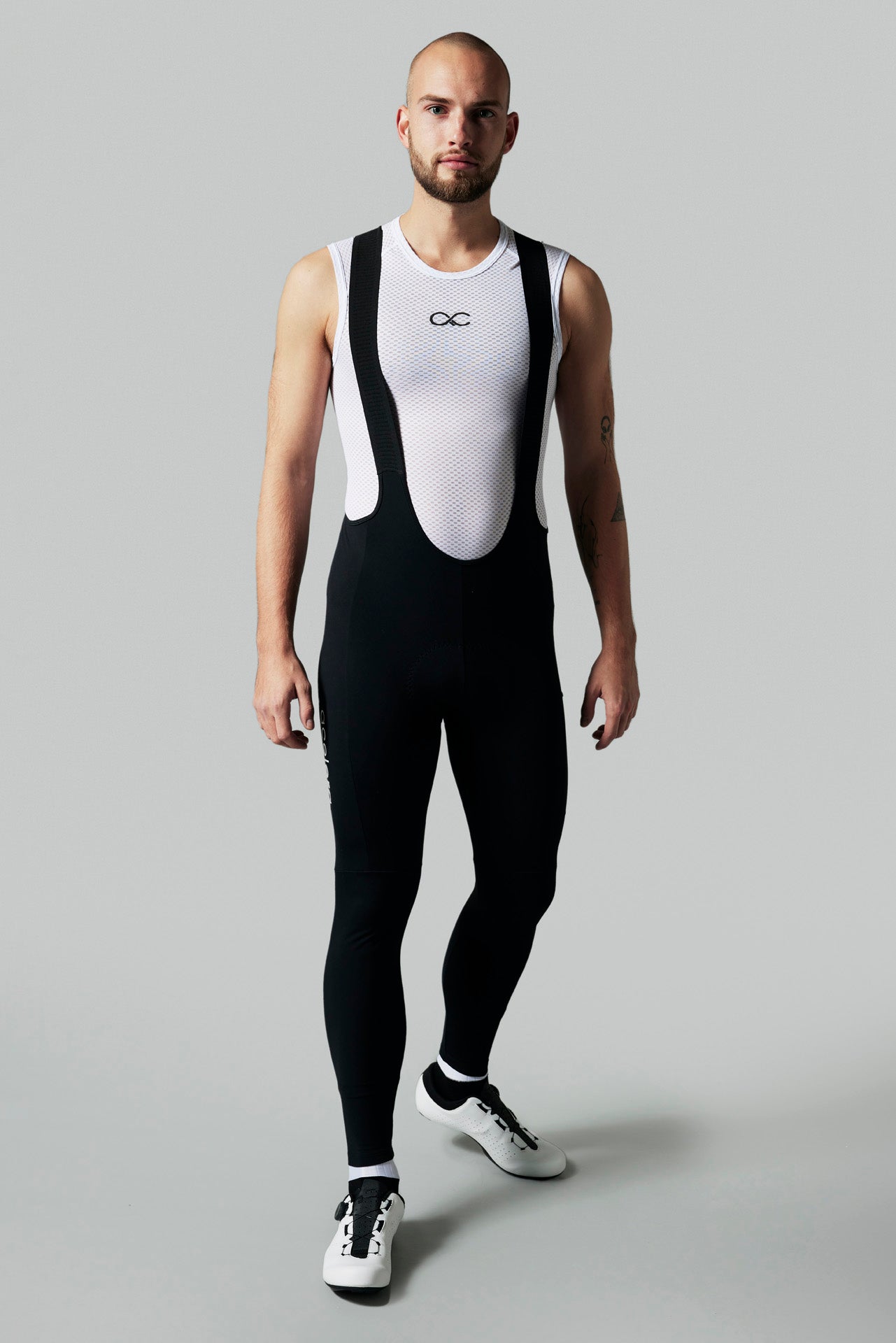
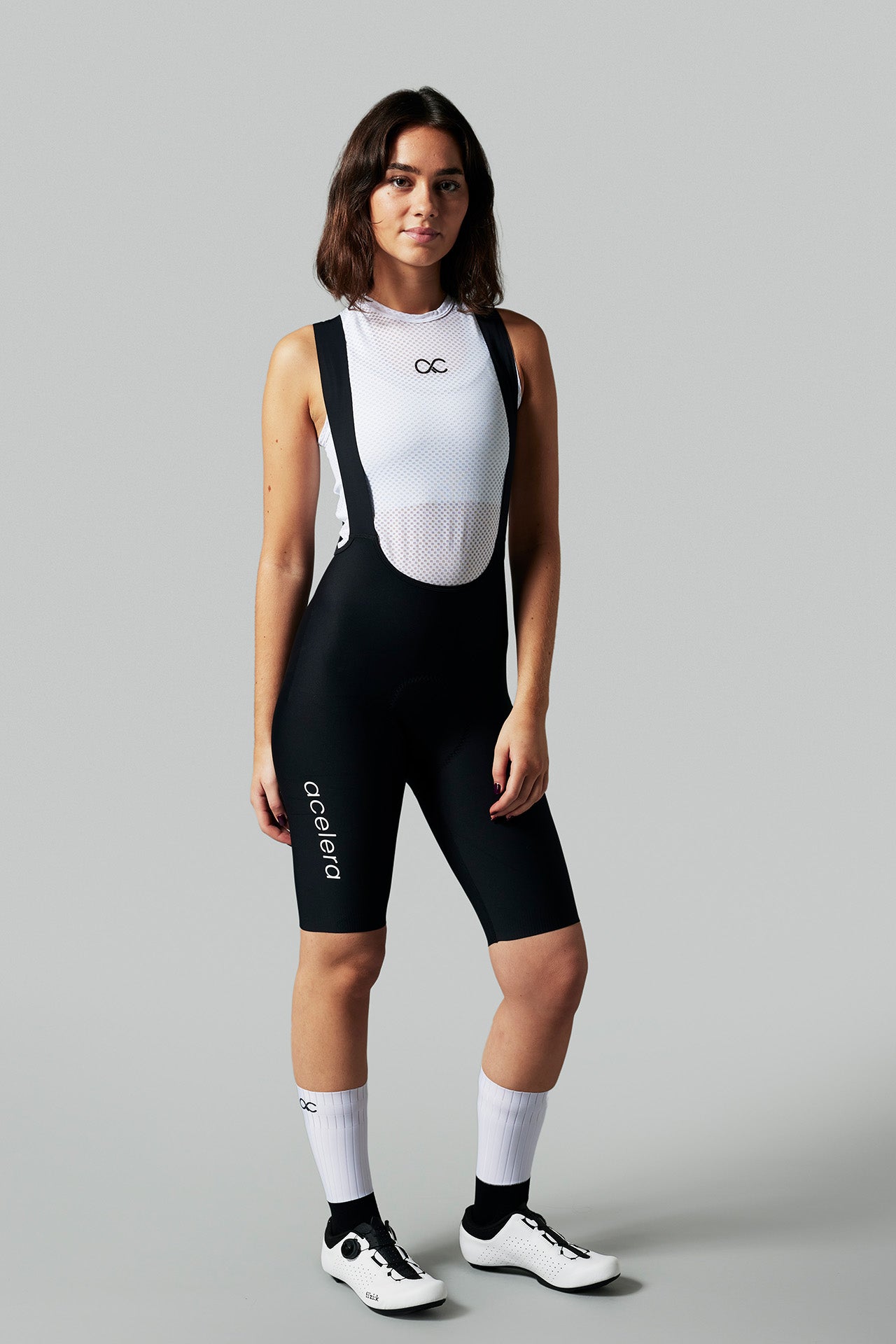
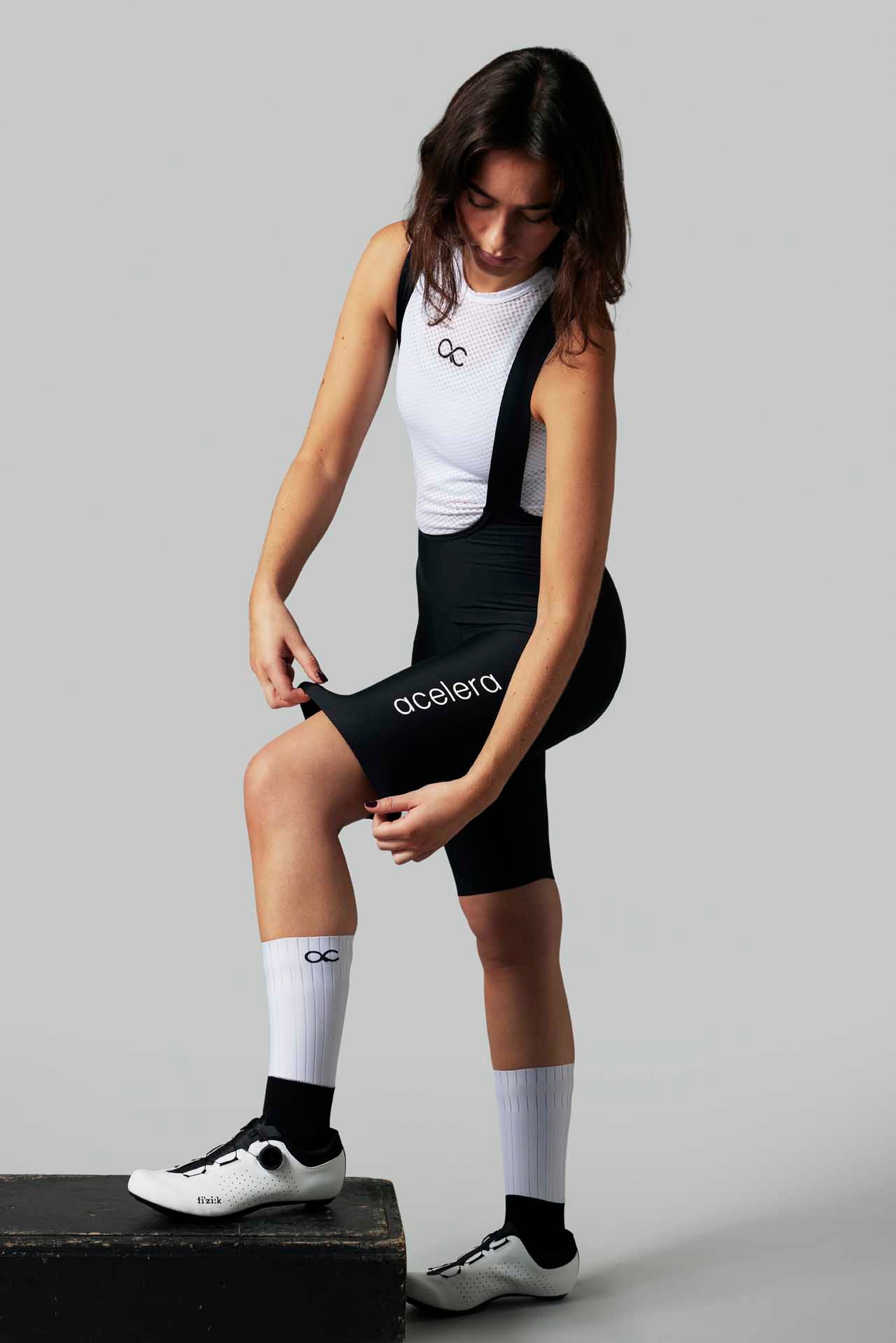


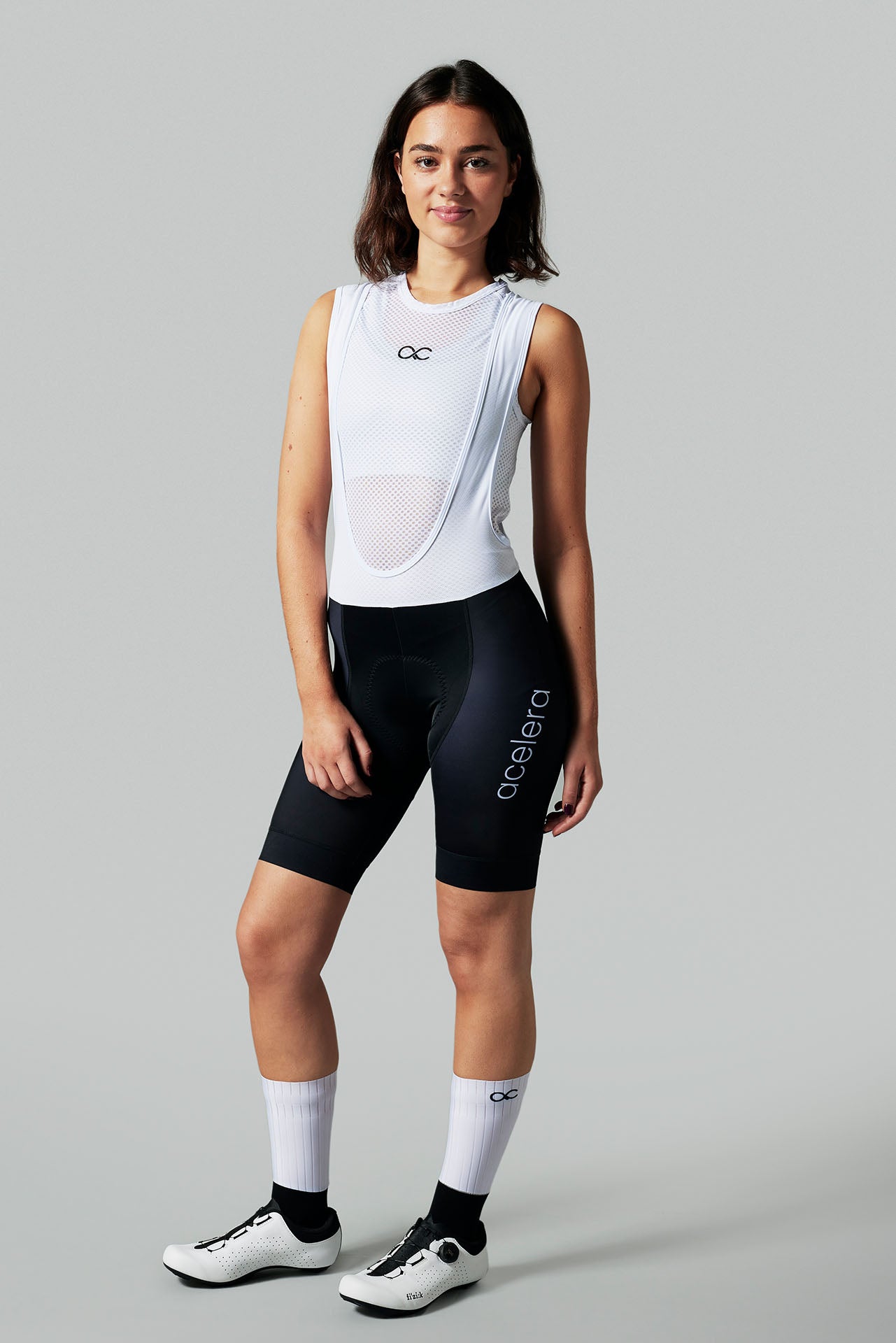
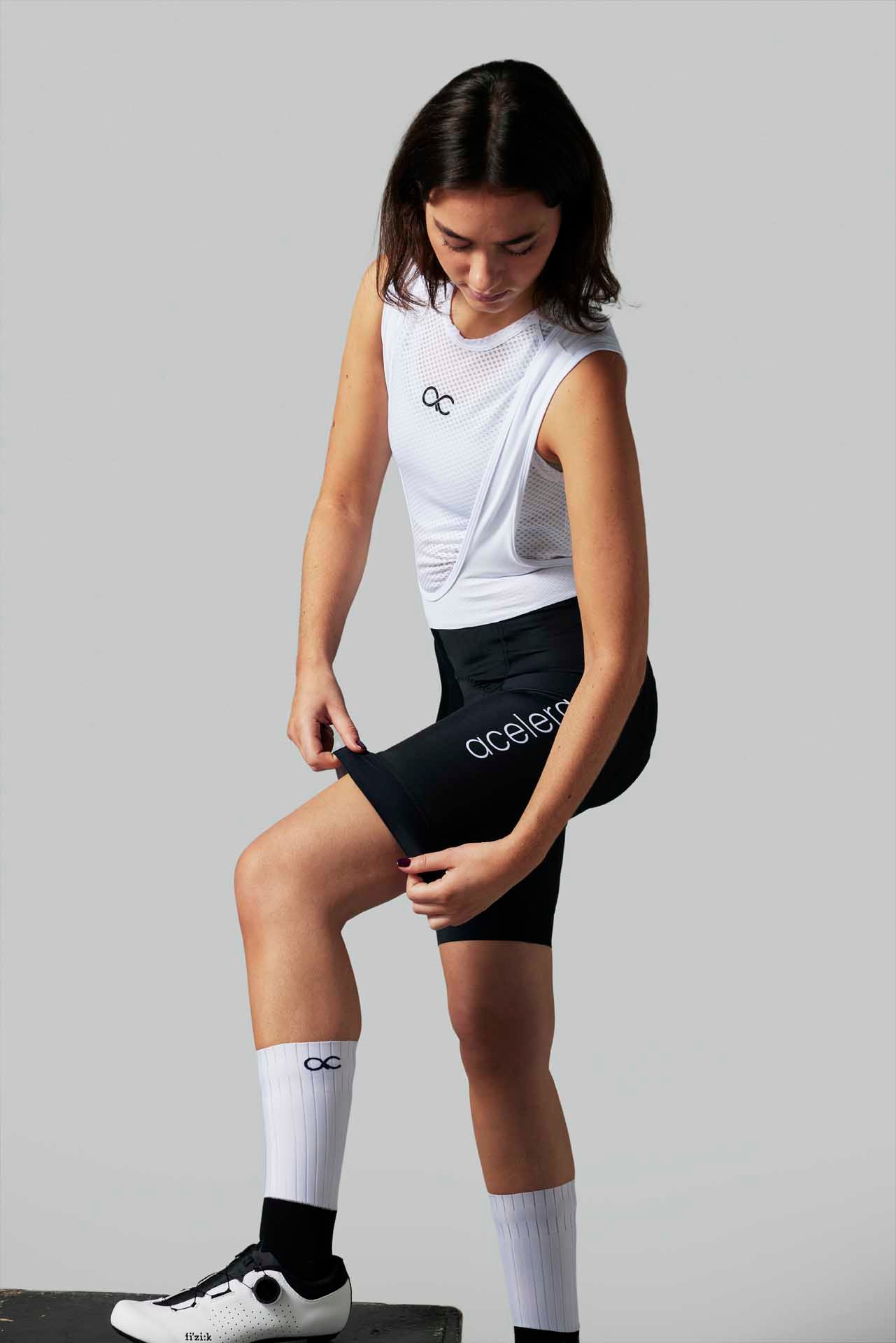


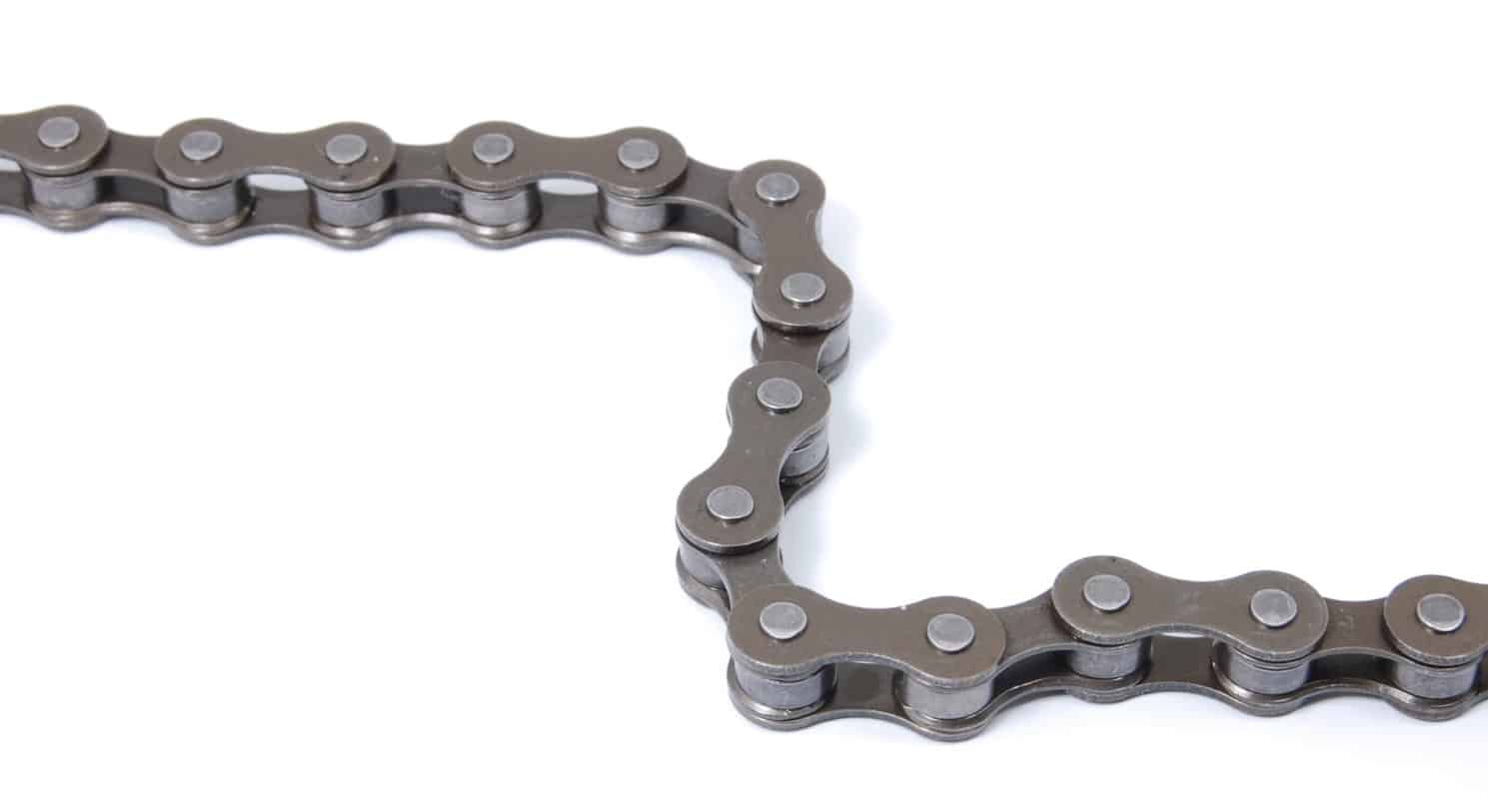
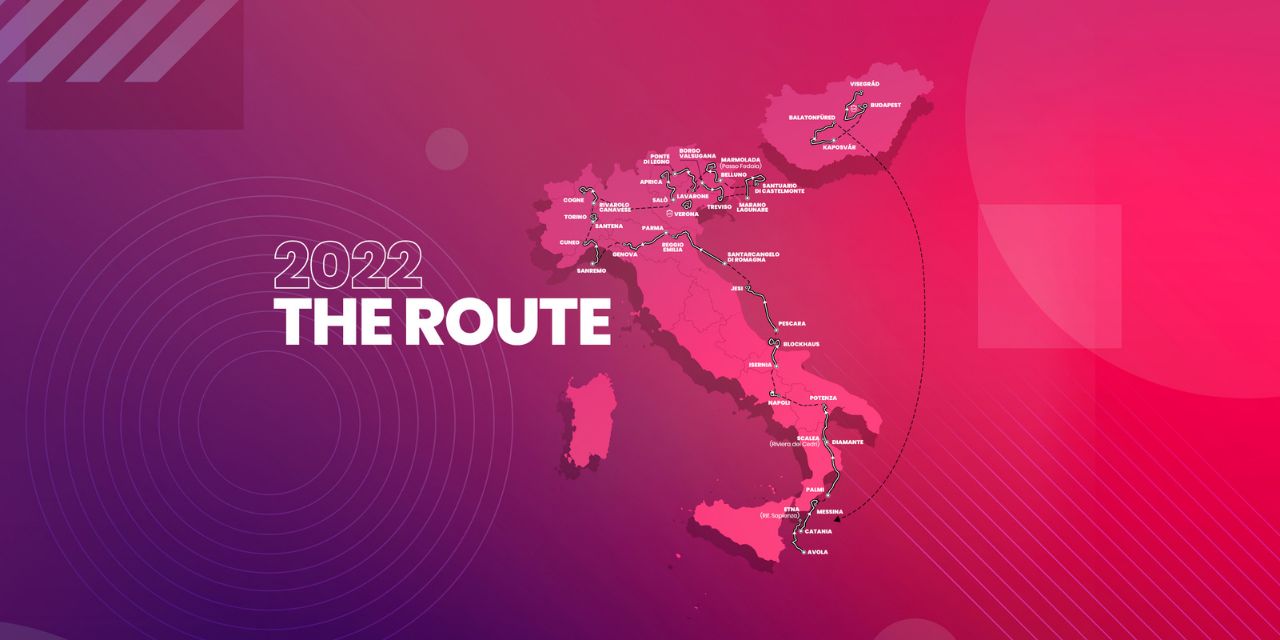
Leave a comment
This site is protected by reCAPTCHA and the Google Privacy Policy and Terms of Service apply.